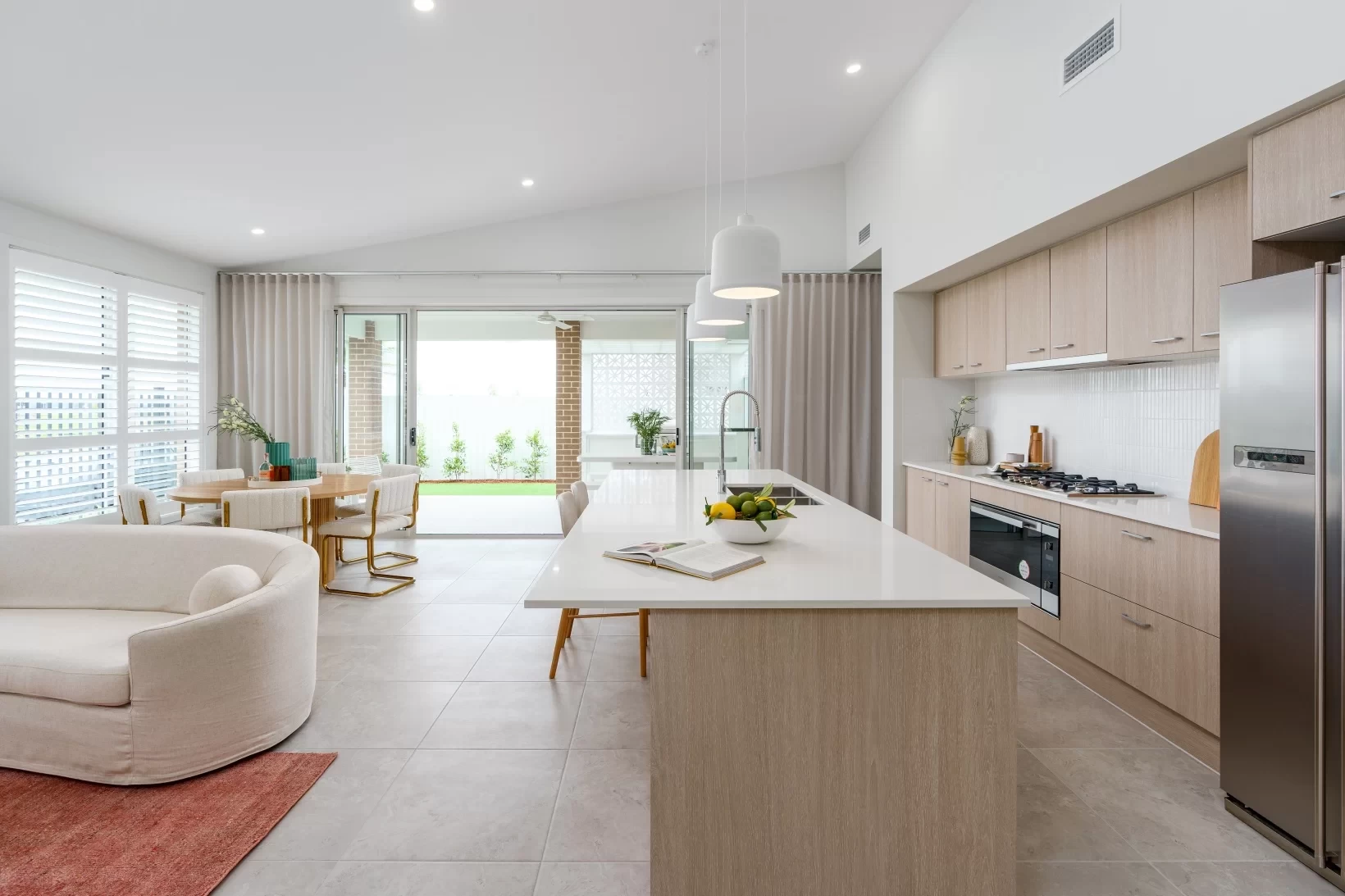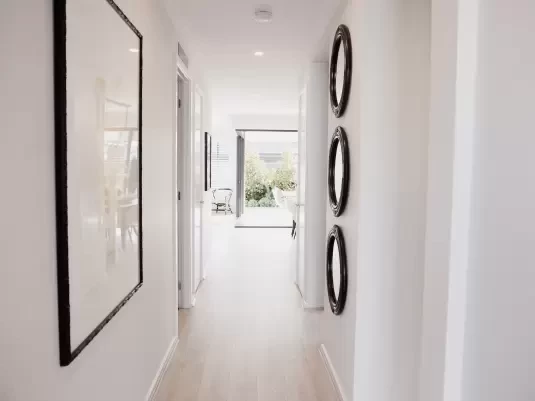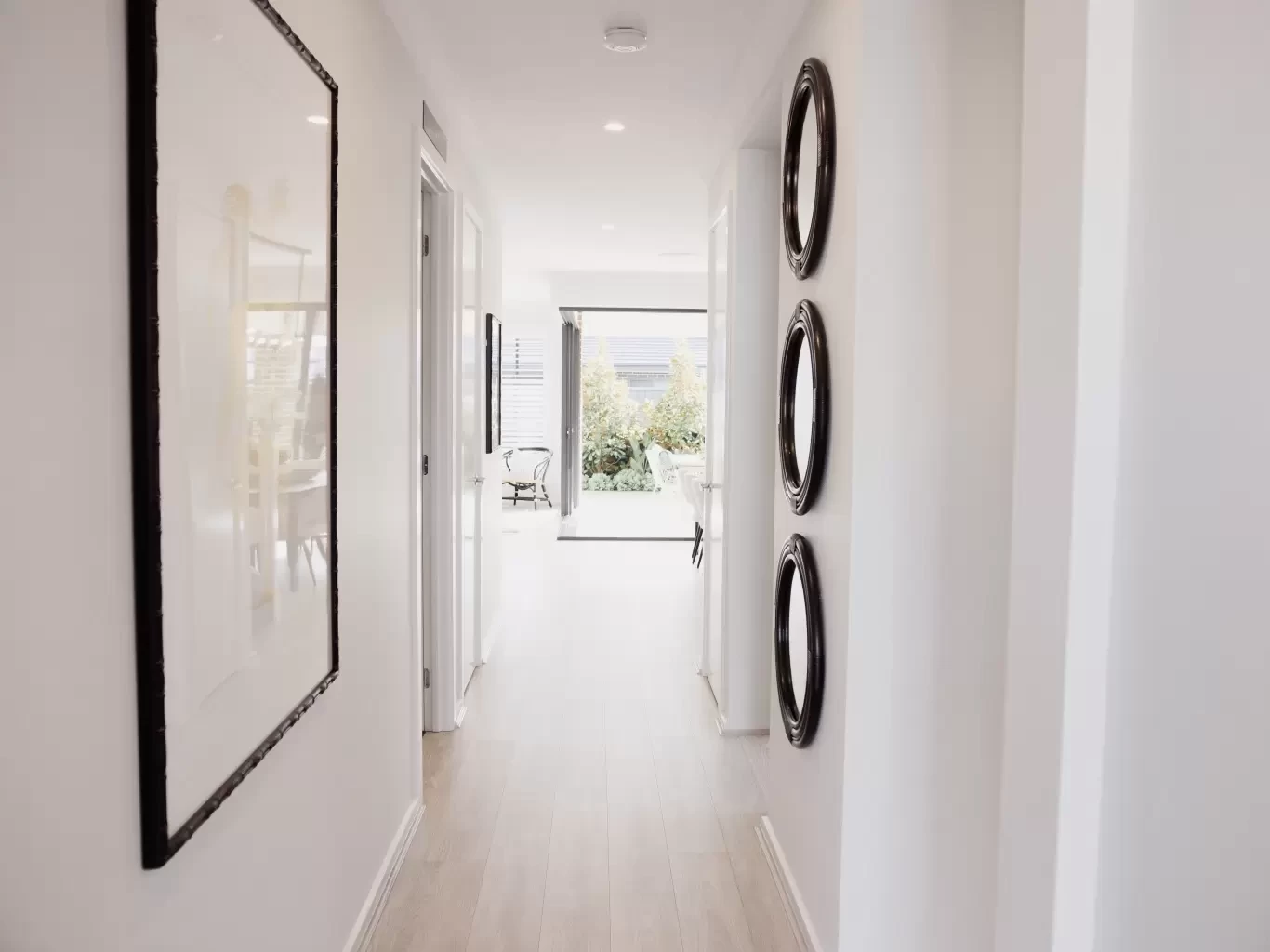Standard Ceiling Height Australia: Everything You Need to Know for 2025
A ceiling height decision will affect your daily life for decades. In 2024, Australian homeowners face constant pressure about their ceiling heights - from builders pushing cost-saving 2.4-meter standards to architects suggesting dramatic 3-meter spaces. The choice impacts everything: your comfort, energy bills, and property value.
The National Construction Code sets clear minimum heights, but the real question is: what height will make your home feel right? Recent data from the Housing Industry Association shows 65% of new Australian homes now feature ceiling heights above the minimum standard. This shift reflects growing awareness of how ceiling height shapes our living experience.
Temperature control presents another crucial factor. Studies by the University of Melbourne demonstrate that higher ceilings can increase heating costs by up to 15% in colder regions. However, in Queensland and Northern Territory, these same heights help with natural cooling through better air circulation.
The standard ceiling height in Australia varies by room type and location. While bedrooms might work well at 2.4 meters, living areas often benefit from additional height. But before you decide, consider this: a 2023 Property Council of Australia survey revealed that 72% of potential buyers rank ceiling height as "important" or "very important" in their purchase decisions.
This guide covers everything about ceiling heights: regulations, energy implications, and real estate value. You'll learn exactly what height suits your needs, backed by current building codes and market research.
Looking for the perfect ceiling height for your Australian home? Let's examine the standards, benefits, and practical considerations that will affect your decision.
What is the Australian standard for ceiling height?
- Minimum ceiling height for homes in Australia is 2.4m.
- Bedrooms and living areas often stick to this standard for comfort.
- Kitchens might have a bit more height for better airflow.
Standard ceiling height regulations Australia
The National Construction Code (NCC) outlines the minimum ceiling height of 2.4 meters for habitable rooms in residential buildings across Australia. These include bedrooms, living rooms, and other spaces where people spend significant time. This baseline is set to ensure adequate space for comfort and ventilation, as well as to accommodate lighting features and other structural elements.
Different spaces within a home might have varying recommendations slightly beyond the NCC standard. For instance, kitchens are sometimes designed with slightly higher ceilings than the minimum. This can enhance ventilation—a crucial factor given the cooking and heat generation that occurs in these areas. Besides, kitchens often need more vertical space for upper cabinets and lighting.
Specialised spaces like bathrooms, laundries, and corridors might have lower permissible ceiling heights, typically around 2.1 to 2.4 meters. This is due to their lesser use for prolonged activities. However, when planning renovations or building, checking with local builders or architects is crucial to ensure compliance with both national and any additional state-specific requirements.
Explanation of standard clauses in residential building codes Australia
The National Construction Code is the primary document detailing building standards, including ceiling heights, across Australia. Within the NCC, clauses related to ceiling heights are found predominantly in Volume Two, which covers building requirements for residential properties. This section ensures that homes offer livable, safe, and comfortable environments.
While the NCC provides a baseline, there might be slight variations based on state or local council regulations. For example, states with hotter climates might have recommendations that favor higher ceilings to enhance natural ventilation and reduce heat buildup. These adaptations are crucial for homes to handle local weather efficiently and affordably.
For those considering building or renovating, consulting the NCC alongside state-specific codes will help provide clarity. Builders and architects with local experience often contribute valuable information on how regional codes might influence design choices. Understanding these will help ensure regulatory compliance and enhance living comfort effectively.
Addressing Common Questions
What is the Australian standard 2785?
Australian Standard 2785 provides guidelines for suspended ceiling systems, mainly focusing on their installation in non-loadbearing environments. It covers the construction and testing standards to ensure safety and functionality in commercial and multi-residential buildings rather than ceiling height directly applicable to residential homes.
What are high ceilings in Australia?
In Australia, ceilings above 3 meters are often considered high. These ceilings can offer a spacious feel, greater natural light access, and enhanced ventilation. They are popular in both modern and traditional home designs, adding to the aesthetic appeal and functional benefits of a property. High ceilings can also affect heating and cooling efficiencies, making them an important architectural choice for many homeowners.
Data from the Australian Bureau of Statistics shows that homes with ceiling heights of 2.7m or higher saw a 9% increase in resale value compared to homes with standard 2.4m ceilings over the last five years.
Are there Ceiling Height Considerations for Energy Efficiency?
Choosing the right ceiling height also impacts air circulation and energy efficiency. The standard ceiling height Australia mandates ensures a baseline of comfort, but homeowners looking for enhanced ventilation may consider vaulted ceilings or increasing their average ceiling height. One effective way to regulate temperature in spaces with higher ceilings is to install ceiling fans, which help distribute air more efficiently. This is particularly useful in homes with vaulted ceilings, where heat can accumulate at the top, making cooling systems work harder. By combining passive cooling strategies like natural airflow with ceiling fans, homeowners can optimize energy efficiency while maintaining comfort.
Why ceiling height matters?
- Ceiling height affects the vibe and comfort.
- Impacts natural light and room dynamics.
- Affects heating, cooling, and energy metrics.
Psychological and aesthetic effects of ceiling height
Ceiling height can change how a room feels. High ceilings can make a space feel open. They can create a sense of freedom, which some people find calming. Low ceilings can feel cozy. They might give a room a more intimate vibe.
Natural light is another factor. High ceilings let in more light, especially with large windows. This improves mood and can make the room look bigger and brighter. Researchers have studied these effects. The book "The Architecture of Happiness" by Alain de Botton explores how architecture and design can influence our emotions and behavior. It talks about how building designs, including ceiling heights, contribute to our overall well-being. On the flip side, too high or too low ceilings might not suit everyone. Some feel lost in vast spaces, while others might find low ceilings confining.
Energy efficiency ceiling height considerations
Ceiling height directly affects heating and cooling. High ceilings mean more volume, which takes more energy to heat in winter. Cooling down tall spaces in summer can be tricky too. A room with a high ceiling might feel cooler in summer because hot air rises, but it can also be more costly to keep warm in winter. Energy ratings like those determined under the National Construction Code (NCC) consider these factors.
Choosing the right ceiling height should balance comfort with energy efficiency. High ceilings can be part of a home’s energy-efficient design if combined with other elements like fans or proper insulation. This is explored in resources like "Energy-Efficient Architecture" by Roberto Gonzalo.
How to choose the right ceiling height for your home
- Match ceiling height to your lifestyle and home style.
- Boost home value with the right ceiling height.
- Consider long-term benefits like comfort and space use.
Factors influencing ceiling height choice
Different factors guide the decision on ceiling height. The right choice integrates personal taste, needs, and the home's architectural style.
Personal preference and lifestyle needs
Many people prefer higher ceilings for a sense of openness, while others prefer lower ones for coziness. Open-plan homes may feel better with higher ceilings, accentuating the space. If you entertain often, a higher ceiling creates a grand feel. Consider family dynamics too. Kids' rooms with higher ceilings may feel larger and more fun. For compact spaces, lower ceilings can make the space feel more intimate.
Architectural style of the building
Ceiling height should suit the home's architectural style. A Victorian-style home might look inconsistent with low ceilings. In contrast, modern minimalist designs could suit lower ceilings. Historic homes often have higher ceilings. Respecting these traditional aspects keeps the home authentic. Talk to an architect about how style can impact ceiling choice.
1. Consider room function
The function of each room heavily influences the ceiling height decision.
Guidelines for different rooms
Different rooms have different needs. Kitchens often have higher ceilings for better ventilation. Bedrooms, especially master suites, benefit from higher ceilings to enhance relaxation. Living rooms with higher ceilings add to the sense of space. Bathrooms and utility rooms often have lower ceilings to save space and costs.
Balancing form and function
While aesthetics are essential, function should not be ignored. A high ceiling in a small room might feel odd. Rooms should have ceiling heights that match their usage. An open-plan kitchen and living area would benefit from a higher ceiling to create continuity and a sense of unity. Balancing these elements ensures both beauty and practicality.
2. Impact on property value
Ceiling height can directly influence the financial aspects of a property.
How ceiling height can affect resale value
In Australia, buyers often seek homes with higher ceilings as they convey luxury and space. Higher ceilings in living areas can increase appeal, potentially elevating resale value. Investing in moderately higher ceilings, such as 2.7 meters, increases interest without excessive construction costs.
Buyer preferences in the Australian property market
In 2025, buyers prefer homes with at least 2.6 meters, viewing this as a standard height. A ceiling at 2.7 meters is considered both practical and appealing. Really high ceilings, around 3 meters, are more common in upscale markets.
3. Assess long-term benefits
Choosing the right ceiling height goes beyond immediate needs. It involves considering future comfort and flexibility.
Comfort and adaptability
Higher ceilings improve air circulation and light distribution, making spaces more comfortable year-round. They adapt better to changes, like converting a living room into a home office. During renovations, higher ceilings offer flexibility for design changes.
Future-proofing for renovations or extensions
Thinking about future plans for your home helps in choosing ceiling height. Ceiling height flexibility aids in adding features like lofts or mezzanines. When extending a property, consistent ceiling height in new sections keeps aesthetics and function aligned. This foresight supports evolving needs without major structural modifications.
Is 2.7 a good ceiling height?
In 2025, a 2.7 meter ceiling height is a good choice for many homes in Australia. It strikes a balance between practicality and market appeal, fitting within current trends. This height is above the standard 2.4 meters and often matches lifestyle needs and buyer expectations. It does not require the structural considerations needed for very high ceilings like 3 meters or above.
While specific data on the impact of ceiling height on property value in Australia is limited, it's generally acknowledged in the real estate industry that higher ceilings can enhance a property's appeal. This perception is due to the sense of space and luxury that higher ceilings provide, which can attract potential buyers.
For more detailed insights into factors influencing property values, including design elements, you might consider consulting reports from reputable sources such as CoreLogic Australia. Their analyses offer comprehensive data on housing market trends and valuation factors.
These resources can offer a broader understanding of how various factors, including architectural features like ceiling height, may impact property valuations.
How does ceiling height affect your living experience?
- Higher ceilings improve air circulation and enhance psychological well-being.
- Ceiling height can vary due to climate and architectural trends.
- 3m ceilings offer benefits but may increase heating costs.
Impact of ceiling height on indoor quality
Air circulation and ventilation
Ceiling height directly influences how air circulates within a room. Various systems, like ceiling-based air distribution (CBAD) and underfloor air distribution (UFAD), are impacted differently by ceiling height. For instance, higher ceilings can facilitate better airflow, allowing these systems to maximize efficiency. Conversely, lower ceilings might limit air distribution, leading to uneven temperature distribution, which can affect comfort. Studies confirm these differences, highlighting how air distribution systems can lead to variations in thermal comfort. Understanding these intricacies might guide the choice of ceiling height, balancing airflow efficiency and thermal comfort.
Contribution to healthier living environments
Higher ceilings benefit not only air quality but also the overall healthiness of indoor environments. They're linked to improved psychological well-being and sense of space. Such spaces might feel less constricting, promoting mental well-being and fostering creativity. Research supports the claim that air quality, together with thermal comfort, influences health outcomes. People often feel more at ease in spaces where the ceiling height promotes good air circulation and aligns with psychological preferences. For those sensitive to air quality and those who value mental comfort, opting for higher ceilings may bring more satisfaction.
Measuring the average height of homes in Australia
Statistics and trends in construction
The typical Australian home often has varied ceiling heights, typically ranging from 2.4 to 2.7 meters. However, there is a growing trend towards ceilings reaching up to 3 meters, especially in newer homes. This shift reflects changing architectural styles and consumer preferences. Variations in ceiling heights across the country are influenced by factors like climate and local building codes. For instance, homes in warmer regions might prefer higher ceilings for better cooling efficiency, while southern colder areas might prioritize energy conservation with lower ceilings. Keeping an eye on these trends helps homeowners choose ceiling heights that meet both practical needs and design preferences.
Reasons for variations across regions
Regional differences can significantly shape how ceiling heights are chosen. In coastal areas, where the climate is milder, higher ceilings can offer advantages such as enhanced airflow and cooling efficiency. Inland regions might feature lower ceiling heights, as such designs may help in trapping heat during colder months. Moreover, cultural influences and historical building practices also play roles. In places with a rich architectural heritage, ceiling heights might reflect traditional styles, whereas modern developments may lean towards meeting new aesthetic and comfort standards. Understanding these regional differences is crucial for anyone planning to build or renovate a home in Australia.
Is 3m a good ceiling height? Pros and Cons
Benefits of higher ceilings like better airflow and lighting
A ceiling height of 3 meters carries with it several advantages. It allows for superior air circulation, making spaces feel fresher, and can also improve natural light distribution, especially in rooms with large windows. This can lead to reduced dependency on artificial lighting, thus conserving energy. Additionally, the sense of space fostered by higher ceilings often makes homes feel more luxurious and comfortable. Such environments can potentially increase a property's appeal and resale value due to their spaciousness and perceived elegance.
Potential downsides including heating costs and maintenance
There are, however, downsides to a ceiling height of 3 meters. Homes with tall ceilings generally require more energy for heating, as warm air rises, leaving lower living areas cooler. This can lead to increased heating bills, especially in colder regions. Maintenance can also become a concern, with higher ceilings necessitating additional work for cleaning and repairs, like reaching high light fixtures or repainting. These factors should be weighed carefully. Balancing aesthetic goals with practical implications ensures that the chosen ceiling height aligns with both personal preferences and practical needs, maintaining a functional yet stylish living environment.
While specific statistics on the prevalence of 3-meter ceilings in modern Australian home designs are limited, there is a notable trend towards higher ceilings in contemporary architecture. This shift reflects a growing preference for spaciousness and enhanced natural light among homeowners.
According to the Australian Bureau of Statistics, the total number of dwellings commenced in Australia fell 1.1% to 40,293 dwellings in the June quarter, in seasonally adjusted terms. New private sector other residential commencements drove the decrease, falling 7.4% to 13,756 dwellings, following a rise of 1.4% in the March quarter. Private sector house commencements rose 1.7% to 25,732 dwellings and follows a rise of 5.7% in the March quarter.
While this data provides insight into overall building activity, specific details on ceiling heights are not readily available. However, industry observations suggest that higher ceilings are becoming more common in new constructions, aligning with modern design preferences and the desire for increased natural light and ventilation.
For more detailed information on building trends and statistics, the Australian Bureau of Statistics offers comprehensive reports on building activity.
Additionally, the Housing Industry Association provides insights into housing industry trends and forecasts.
These resources can offer a broader understanding of current trends in Australian home designs, including preferences related to ceiling heights.
Conclusion
Ceiling height affects every aspect of your home life, from your comfort to your energy bills. The standard ceiling height in Australia continues to evolve with modern building practices and changing preferences. The National Construction Code sets clear minimums, but your choice should go beyond meeting basic requirements.
A well-chosen ceiling height creates a living space that serves your needs today and adapts to future changes. The decision impacts air quality, natural light, and your daily comfort. Higher ceilings offer better ventilation and a sense of openness, while standard heights can be more energy-efficient and cost-effective.
Before finalising your ceiling height decision, consider your local climate, room function, and long-term plans. In Australia's varied climate zones, the right ceiling height balances aesthetic preferences with practical considerations. Energy efficiency ratings, maintenance costs, and property value all play crucial roles in this decision.
Your ceiling height choice will shape your living experience for years to come. Focus on what works best for your lifestyle, budget, and specific needs rather than following trends. Make an informed decision based on your circumstances, and you'll create a home that truly works for you.








